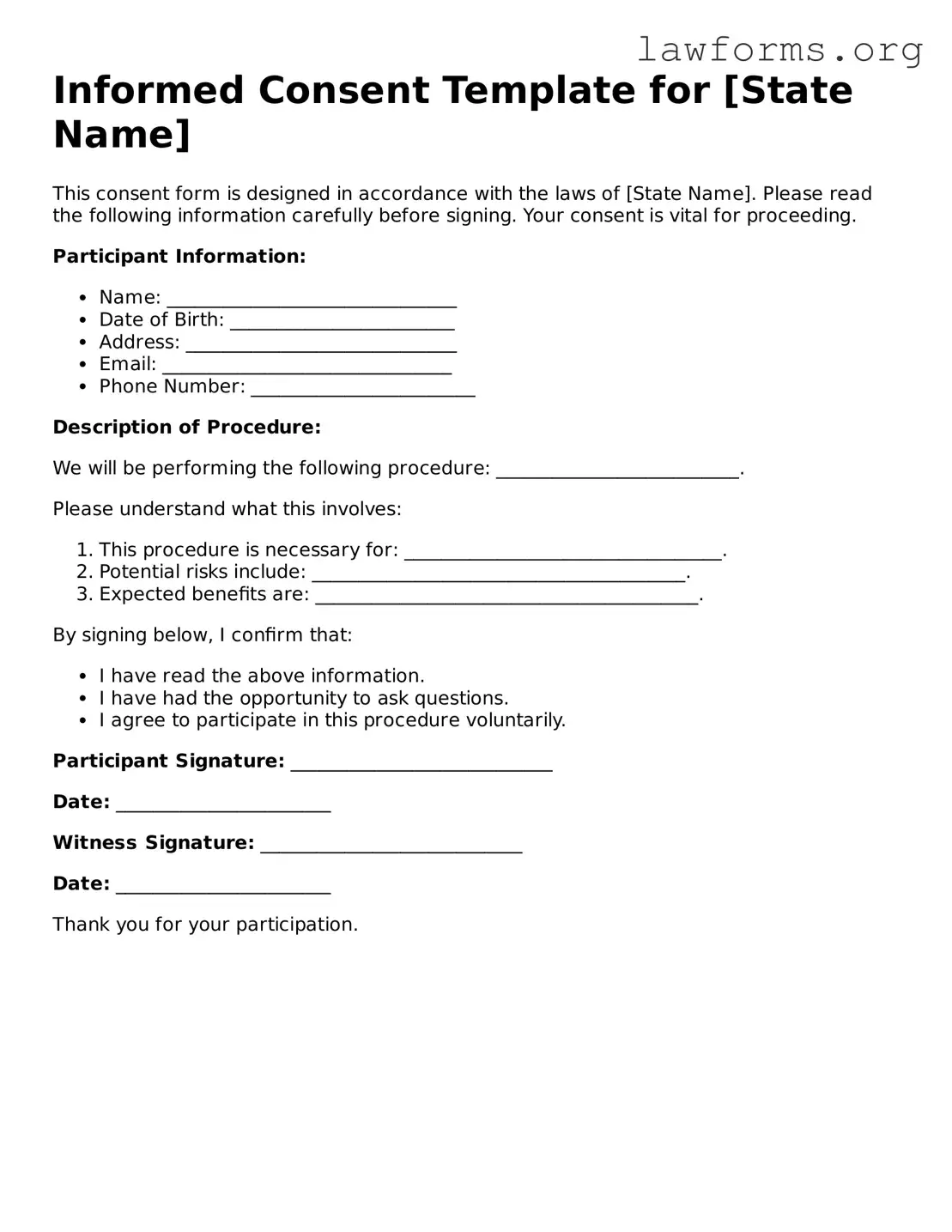Informed Consent Template for [State Name]
This consent form is designed in accordance with the laws of [State Name]. Please read the following information carefully before signing. Your consent is vital for proceeding.
Participant Information:
- Name: _______________________________
- Date of Birth: ________________________
- Address: _____________________________
- Email: _______________________________
- Phone Number: ________________________
Description of Procedure:
We will be performing the following procedure: __________________________.
Please understand what this involves:
- This procedure is necessary for: __________________________________.
- Potential risks include: ________________________________________.
- Expected benefits are: _________________________________________.
By signing below, I confirm that:
- I have read the above information.
- I have had the opportunity to ask questions.
- I agree to participate in this procedure voluntarily.
Participant Signature: ____________________________
Date: _______________________
Witness Signature: ____________________________
Date: _______________________
Thank you for your participation.
